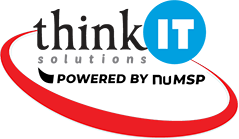Cloud and distributed computing
Cloud and distributed computing seem similar. But, these two methods of computing have different ways of achieving efficiency.
In cloud computing, a service provider delivers cloud computing services through the Internet. Users would also access these services using the Internet. These services could be cloud-versions of traditionally on-premise programs. These include hardware, software, and infrastructure components.
In cloud computing services, two computers are still involved. The other computer is on the host’s side, and another will be on the user’s side. Thus, there are multiple computers involved in cloud computing. With this, Cloud and distributed computing become similar.
Distributed computing also involves multiple computers. But, these computers are not connected by the Internet, as what is the case in cloud computing. In distributed computing, computers are connected by a single network. This is one of the primary differences between cloud and distributed computing.
Read on to see a further description of Cloud and distributed computing to see their differences.

What is Cloud Computing?
Cloud and distributed computing may seem similar. This similarity could be attributed to their setups. Their setups involve multiple computers working as a coherent system.
But, there are still striking differences between cloud and distributed computing. Cloud computing, for instance, has unique features. These features are not found in a distributed setup. Here are some of the features of cloud computing to help you distinguish it from a distributed setup:
- Architecture. The structure is also a key factor that differentiates cloud and distributed computing. Cloud computing has two main parts to its architecture. Those two main parts are namely the front end and the back end.
The front end of the cloud is the part of the cloud platform that is visible to the user. It is the cloud as it appears to the customer. The back end, on the other hand, is the host’s side of the platform. It is the cloud platform as seen by the service provider.
These two main parts of the cloud platform connected by an important component. This connecting component is the Internet. - Service Models. Comparing cloud and distributed computing, the cloud has three main service models. These models are Software as a Service, Platform as a Service, and Infrastructure as a Service. These are abbreviated as SaaS, PaaS, and IaaS respectively.
In SaaS, applications are utilized through the Internet rather than installed. In PaaS, app development tools are delivered through the Internet rather than installed. In IaaS, infrastructure components such as servers and storage are hosted by a third-party provider. - Proprietorship. Comparing cloud and distributed computing, the cloud has three main proprietorship models. These are the public, private, and hybrid clouds.
Public clouds are cloud platforms that are meant to be shared by multiple entities. Hence, the name public cloud. On the other hand, private clouds are meant for the exclusive use of a single entity. Hybrid cloud is a setup when public and private cloud components are used. Hybrid cloud combines the security of the private and availability of the public.
What is Distributed Computing?
Setup is one of the primary factors that differentiate cloud and distributed computing. As described above, in cloud computing, multiple computers are connected by the Internet.
In distributed computing, multiple computers are connected by a single network. These computers are working together to achieve a single goal. This is although they may have different functions.
These functions are traditionally performed by an individual computer. But, in distributed computing, these functions are divided among different computers. In such a setup, the computers are united by a single goal and acts as a single system. A distributed setup is usually done when a task is too complex for an individual computer to perform.
This, then, allows for the faster and more efficient performance of the task. This speed and efficiency are also held by cloud computing. For these reasons, Cloud and distributed computing are often compared.
Similarities
Both Cloud and distributed computing offer fast and efficient solutions for complex tasks. Both platforms also transcend the limitations of on-premise and single-computer environments. Cloud and distributed computing do so by utilizing multiple computers.
Both also use a sort of medium to connect these computers and act as one coherent system. The cloud effectively uses the Internet to connect computers. On the other hand, distributed computing uses a network to do the same.
Another striking similarity between Cloud and distributed computing is scalability. Both platforms offer adjustable and flexible setups. By doing so, their performance could rightly fit the conditions and cater to concerns.
Scalability, speed, and efficiency are also within the vocabulary of ThinkIT Solutions. We offer flexible and industry-specific solutions for businesses. Get in touch with us at +1 (504) 455-5552. You may also send us an email at info@thinkitsolutions.com.


 (4 votes, average: 4.00 out of 5)
(4 votes, average: 4.00 out of 5)